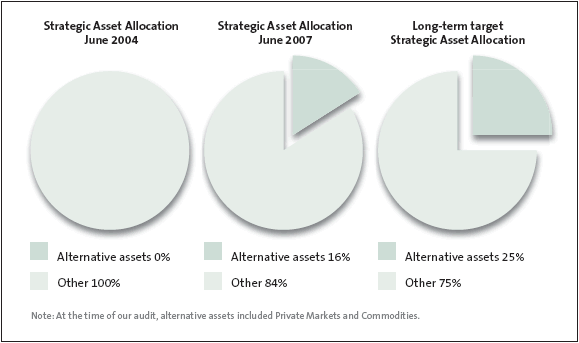How Alternative Are Alternative Assets
Post on: 9 Апрель, 2015 No Comment

Recent Posts:
Chinas Energy-Buying Binge Is Just Starting
How Alternative Are Alternative Assets?
It’s a well-known adage that once fund companies catch on to a trend and create investments to capitalize on it, that trend’s time has likely passed. So it is with the concept of “alternative investments” and their ability to meet their stated objectives.
In the past decade, fund companies have pushed the idea of alternatives as a way to help investors diversify their portfolios. The definition of alternative varies among fund providers, but the best description is any type of investment that doesn’t fit in the usual Morningstar-style boxes. Prime examples are gold, commodities, REITs, international bonds, floating rate notes, hedge fund strategies and so on.
Many alternative funds invest in exchange-traded funds that provide exposure to slices of the market not typically represented in retail investors’ portfolios, such as iShares S&P Global Timber & Forestry Index Fund (NYSEARCA:WOOD ), Market Vectors-Agribusiness ETF (NYSEARCA:MOO ) or WisdomTree Emerging Markets SmallCap Dividend Fund (NYSEARCA:DGS ).
Typically, alternatives sold separately or packaged together into alternative funds are positioned as ways for individual investors to capitalize on strategies that were previously the province of hedge funds and endowments. In general, the would-be benefit of alternative investing is that it could add a new layer of diversification to traditional portfolios.
It all sounds good on paper, but the post-financial-crisis period has been marked by a growing correlation among asset classes as macroeconomic issues and central bank responses have become the primary driver of performance across markets.
This has exposed the trouble with alternative investments: In the current market conditions, alternatives aren’t serving their stated purpose of diversification. The chart below compares the Ibbotson Alternative Completion Index (IBBACI), which invests in a mix of assets typical of a bundled alternative fund, with the Vanguard Balanced Index Fund (MUTF:VBINX ), a $16.2 billion fund that follows the standard 60-40 mix of stocks and bonds. It’s apparent that the correlation between the two has been exceptionally high in the past two years meaning that alternatives haven’t been performing as the fund companies would have you believe.
The chart also shows a large performance shortfall for alternatives, but this is somewhat misleading. The Vanguard fund has outperformed by a wide margin in the past eight months, but this is due in part to the tremendous returns of U.S. Treasuries during that interval. Government bonds make up approximately 44% of the bond portfolio and, therefore, about 17.6% of the fund. As a result, this performance gap could easily reverse in the event global growth picked up and the rally in Treasuries reversed.
Having said this, the alternative category, in fact, has been a dog over all time periods. Consider the return of the open-end alternative mutual funds compared to stocks and bonds during the past decade:














